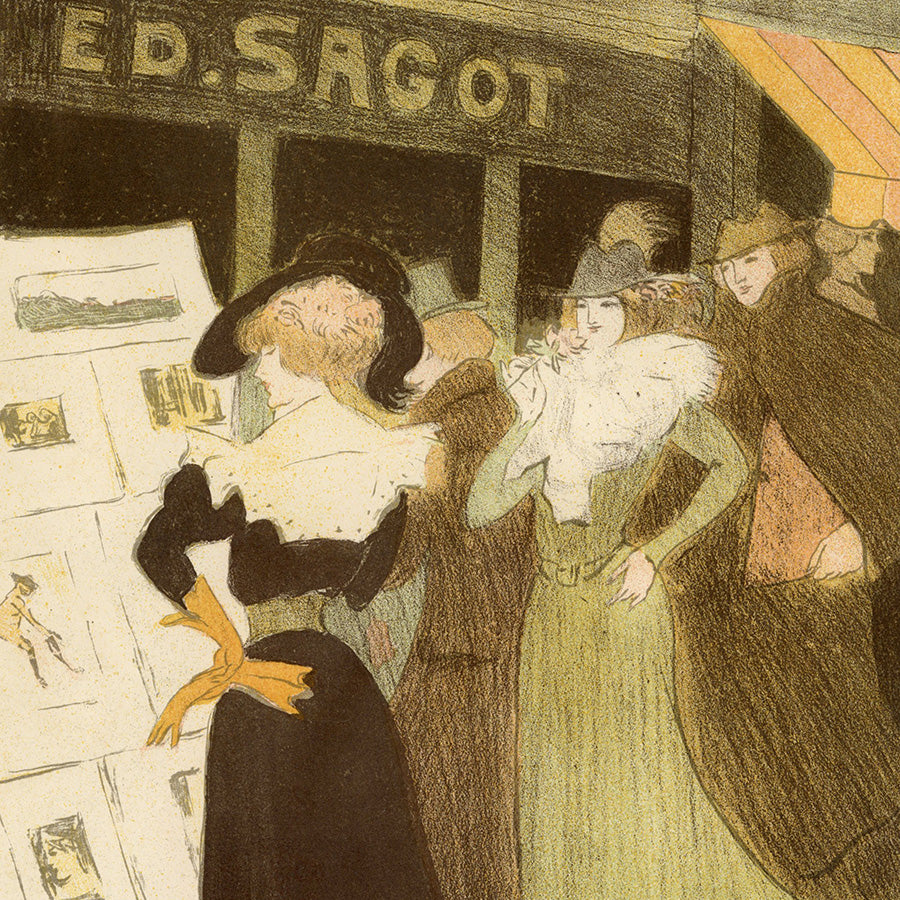 Sold
Sold
The Shop Window of Print Dealer Edmond Sagot
BOTTINI, George
La Vitrine de Sagot or Adresse Sagot (original French titles) The Sagot Address or Sagot’s Lithography Gallery (alternate English titles) Color lit...
View full detailsGeoges Bottini (1874-1907), lived most of his adult life in poverty, despite being a well-known dandy of the Parisian art scene. He went as far as to anglicize his birthname of Georges Alfred Bottini. Son of an immigrant Italian hairdresser, he did odd jobs to sustain himself after high school, eventually landing in the studio of Fernand Cormon, as so many other aspiring artists in the French capital at the end of the 19th century. He seemingly also apprenticed with Annibale Gatti prior to that, and in 1894 found his first artistic recognition thanks to a show at the shop of art dealer Edouard Kleinmann, who also published some of Henri de Toulouse-Lautrec’s prints.
Bottini was mostly self-taught and developed his own style, which is quite unique. Simplifying figures, which have naïve traits, he often depicted complex interiors or street scenes. He built his images with multiple grounds and unusual, foreshortened perspectives, reminiscent of Italian Renaissance Masters, which he greatly admired. Known to be depressive, he did eventually die interned in mental health facility. He left behind a few dozen oil paintings, about two hundred watercolors and a few dozen prints, etchings, woodcuts and lithographs, mostly in color, but sometimes also monochromatic. He often collaborated with Harry van der Zee for the creation of his woodcuts. In his oeuvre figures dominate his café and street scenes, as well as his many bordello images, and assorted cabaret depictions. In most elegantly dressed or undressed dandies seem to be having a good time. After all, depressive or not, it was the Belle Epoque.
 Sold
Sold
La Vitrine de Sagot or Adresse Sagot (original French titles) The Sagot Address or Sagot’s Lithography Gallery (alternate English titles) Color lit...
View full detailsPlease sign up for our newsletter
Email: info@armstrongfineart.com
Phone: 773-887-6776
1200 West 35th Street, #186
Chicago, IL 60609
Copyright © 2025 Armstrong Fine Art.
Development by Alo Agency. Powered by Shopify
